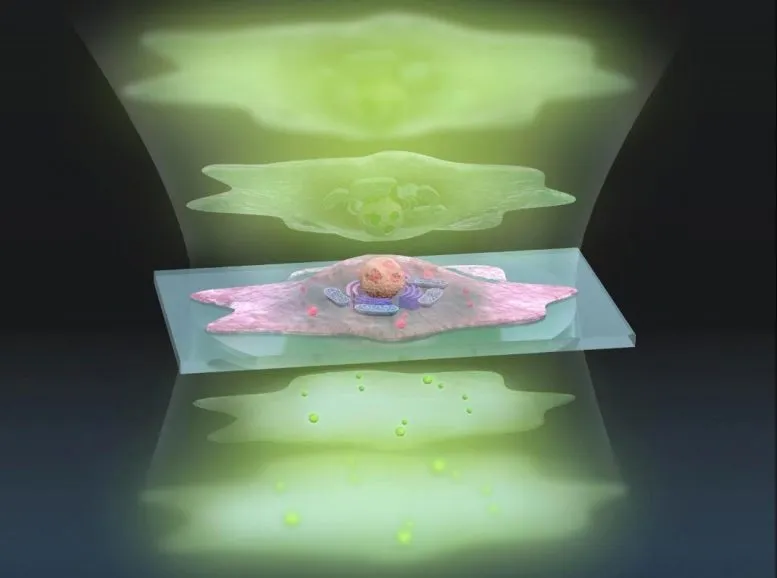WEB DESK, July 1(ABC): Upgrade to quantitative phase imaging can increase image clarity by expanding dynamic range.
Experts in optical physics have developed a new way to see inside living cells in greater detail using existing microscopy technology and without needing to add stains or fluorescent dyes.
Since individual cells are almost translucent, microscope cameras must detect extremely subtle differences in the light passing through parts of the cell. Those differences are known as the phase of the light. Camera image sensors are limited by what amount of light phase difference they can detect, referred to as dynamic range.
“To see greater detail using the same image sensor, we must expand the dynamic range so that we can detect smaller phase changes of light,” said Associate Professor Takuro Ideguchi from the University of Tokyo Institute for Photon Science and Technology.
The research team developed a technique to take two exposures to measure large and small changes in light phase separately and then seamlessly connect them to create a highly detailed final image. They named their method adaptive dynamic range shift quantitative phase imaging (ADRIFT-QPI).
“Our ADRIFT-QPI method needs no special laser, no special microscope or image sensors; we can use live cells, we don’t need any stains or fluorescence, and there is very little chance of phototoxicity,” said Ideguchi.
Phototoxicity refers to killing cells with light, which can become a problem with some other imaging techniques, such as fluorescence imaging.
Quantitative phase imaging sends a pulse of a flat sheet of light towards the cell, then measures the phase shift of the light waves after they pass through the cell. Computer analysis then reconstructs an image of the major structures inside the cell. Ideguchi and his collaborators have previously pioneered other methods to enhance quantitative phase microscopy.

























